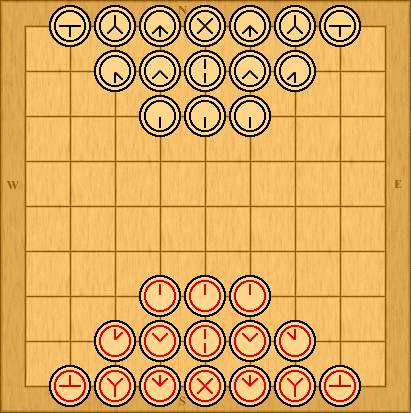

The goal is to capture the enemy Commander, or reduce the opponent army to a single Commander. Each piece has an indicator which determines at which directions the piece can move. This can be altered by rotating the piece 45 degrees, left or right (a direction move). Rotating the piece costs a move.
Each player has 3 Shields, 5 Probes, 6 Lances, and one Commander. The Shield moves one step and has only one movement freedom at any time. The Probe slides two steps and has two freedoms. The Lance slides three steps and has three freedoms. The Commander has four, but can only move one step.
A player must either make a direction move or a motion move. The three Shields are the only pieces that can perform a direction move immediately after a motion move. Capture occurs by displacement.
Ploy was invented by Frank Thibault and commercially released by 3M Company in 1970, as part of the 3M bookshelf game series.
This game seldom ends in a draw. It is sometimes worthwhile to sacrifice material if you can gain an attack on the Commander. When the pieces become scarce, the Commander is more vulnerable to attack. As it can only move four ways, it cannot easily escape. The Lance with the three forward directions is especially suited to attacking the Commander. Remember that you can also win by capturing all enemy pieces except the Commander.
References
‘Ploy overview’. BoardGameGeek. (here)
‘Ploy (board game)’. Wikipedia article. (here)
☛ You can download my free Ploy program here (updated 2018-09-06), but you must own the software Zillions of Games to be able to run it. (I recommend the download version.)
© M. Winther, 2018 August